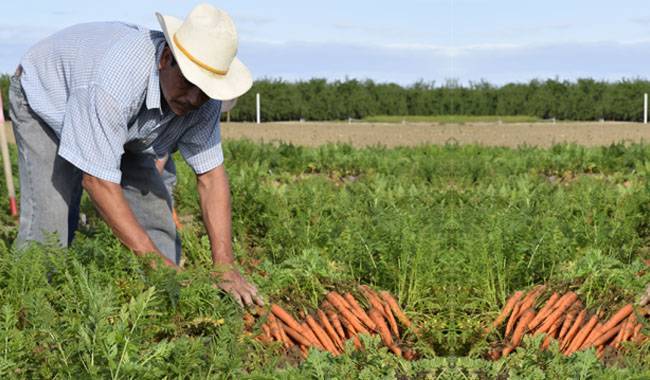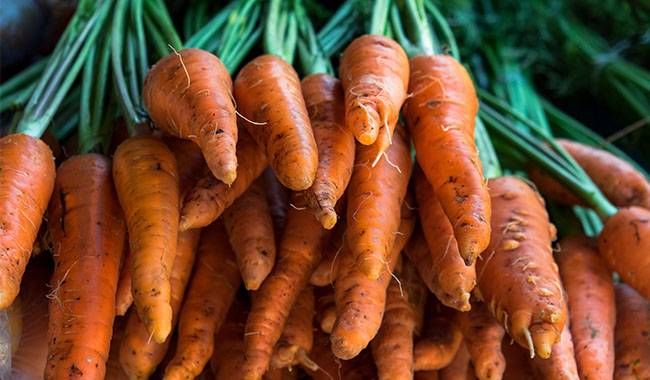
Stores and markets offer a wide variety of carrots all year round, growing in all corners of the world. But we wanted our own sweet, crunchy, natural (free of all chemicals) and with a pleasant vegetable taste.
You can have it if you grow your own. However, carrots are one of those vegetables that don’t keep fresh, quickly lose moisture, dry out hrink, and tend to rot more easily right in the middle of winter.
How can I save carrots and store carrots? What are the causes of their rapid deterioration in storage? What are some ways you can extend the storage of carrots? Follow us on this article.
HOW TO EXTEND THE SHELF LIFE OF CARROTS?
In order to extend the shelf life of your carrots, you must.
- Grow only experienced carrot varieties.
- Follow all the requirements of agricultural techniques (crop rotation, sowing time, irrigation, nutrition, pest, and disease prevention).
- Do not use late maturing carrot varieties for storage. The latter do not have time to mature and accumulate enough sugar and fiber. It is especially important to observe this requirement in areas with short warm periods. Medium and medium-late varieties of different maturity stages store better.
When placing carrots, carefully prepare storage space and containers and observe storage conditions.
Requirements for storing root carrots
A very important thing is to choose a suitable storage method and to prepare a place for storage.
Carrots can be stored in specially equipped basements, vegetable pits, insulated balconies, and wooden houses in apartments and other equipped places.
Regardless of the storage method used, the following conditions must be observed.
- Air temperature between 33-35 °F (1-2 °C).
- Air humidity of 85%-90%.
The optimal storage temperature is 32-34°F (0-1°C). At these temperatures, the humidity in the storage room can be increased to 90-95%.
Do not drop the temperature to 30°F (-1°C) and below, as the tissues of root crops will freeze, begin to rot and become covered with mold, and above 35°F (2°C) will sprout thread-like roots that are heavily affected by fungal diseases.
How to store carrots
The best and longest storage time for carrots is in the river, in dry, sifted sand. To prevent sterilization by fungus and other infections, burn or heat at high temperatures (root crops are more likely to rot in wet sand).
Some gardeners recommend not taking river sand, but yellow soil, but it is more difficult to disinfect.
In addition to sand, dried pine sawdust, onion shells, wood ash, and chalk are also used to transfer root crops during storage. Ash and chalk powder are used only for disinfection of carrots and to prevent the spread of rot. It is most convenient to store carrots in soft containers.
Consider in more detail some ways of storing carrots.
Storing carrots in sand
Root crops can be stored directly in piles of sand (without stones). Due to the limited space allocated for storing vegetable products in winter, it is better to store carrots in crates.
Containers are chosen under the mass of carrots in the range of 10-25 kg. Wooden containers are disinfected with manganese solution or bleached with fresh slaked lime. The carrots were dried and placed so that their roots did not touch. Each row of carrots was sandwiched with previously prepared sand.
Some gardeners even pre-wet the sand at a ratio of 1 liter of water per bucket of sand and mix it thoroughly.
Store the carrots in other fillers
Instead of sand, dry pine sawdust or dry onion shells can be used to store carrots. The preparation of the containers and storage conditions are the same as for the sand filler. Pine sawdust and onion shells contain phytocides, thus preventing root crop rot and premature sprouting.
Using sphagnum moss to store carrots
The container should be sterilized. In this case, carrots should preferably not be washed, but only slightly dried in mid-air (not in the sun).
Warm root crops should be cooled before being placed in prepared containers with alternating rows of carrots arranged in dry sphagnum moss.
Sphagnum moss has antiseptic properties and easily retains the necessary amount of carbon dioxide. Healthy storage of carrots produces almost no waste. The moss is light enough not to burden the box with root crops, such as sand or sawdust.
Soak carrots in clay putty
This method can also be used if there are no sand, sawdust, or onion shells. Carrots should be soaked in clay “amphetamine-type stimulant” (water sour cream suspension) before storage, dried, and transferred to a container with purification.
The clay should be clean and free of soil, roots, weeds, etc. Instead of soaking each root crop, the entire box or basket can be placed in the clay suspension at once.
After draining the excess ATS container, set it on a low shelf or stand with enhanced ventilation and dry it for 1-2 days (to dry the roots of the ATS and the walls of the container faster). Using this method, root crops can avoid wilting and rotting.
Clay can be replaced by chalk. Treated root crops are sometimes additionally interspersed with sawdust – preferably of conifers. Their phytocide kills disease-causing fungi and suspends the decay process.
Store carrots in bagged containers
Plastic bags (polyethylene bags)
More often than not, gardeners prefer to store carrots in polyethylene bags or sugar bags, with a capacity of 5 to 20 kg. The bags with carrots are stacked tightly on a shelf and kept open. Carrots get enough oxygen and rarely accumulate carbon dioxide.
The CO2 content can increase to 15% or more as the bags are tied at the neck. Under these conditions, carrots spoil more quickly (within 1.5 to 2 weeks).
In polyethylene bags, at high humidity, moisture appears on the inside walls. If you lower the humidity, the dew will disappear. The natural humidity inside open polyethylene bags containing root crops is between 94 and 96%.
These conditions are optimal. Carrots do not wilt and are not stored well enough. Losses do not exceed 2% of the mass of root crops laid.
Sugar bags
These bags usually have a polyethylene lining that causes moisture build-up and vegetable spoilage.
Therefore, before putting the carrots in, cut a few small slits inside (always at the bottom of the bag) for better air exchange and to reduce the concentration of carbon dioxide, and tie the string around the neck loosely, even leaving a half opening.
Cover root crops with ashes or chalk (just like pollination before stacking). Other considerations when storing carrots are the same as in plastic bags.
PREPARING CARROTS FOR STORAGE
Not every variety of carrots can be stored. Late varieties in storage can become tasteless, coarse, and lose their juiciness. The flesh of early varieties is too tender. With the slightest violation of the temperature and humidity requirements in storage, they can begin to mold, rot, and sprout.
For storage, it is better to choose carrot varieties of medium maturity (harvested within 100-110 days). The beginning of the harvest can be determined by the condition of the tops. If the leaves below have started to turn yellow, it is time to harvest the roots.
If the weather is dry, give the carrot beds plenty of water 7 days before harvest. If prolonged rainfall is expected, it will be necessary to remove the crop before it starts to grow. In cloudy, wet weather, dry the harvested crop in a well-ventilated or vented shed.
Be especially careful when digging up or pulling out carrots, taking care not to damage the roots. When removing carrot roots, try to shake off the soil without mechanical damage (from bumping into each other, being cut by a fork, having the top torn off, etc.). It is best to use soft gloves to gently clean off the adhering soil.
Harvested root carrots do not need to be completely stripped from the soil and cleaning is not recommended. Long-term storage of uncut leaves in the air can lead to rapid wilting, which can cause disease in winter.
It is best to cut the traction on the same or next day of harvesting carrots. When cutting the haul, leave no more than 0.4inch (1cm) of the stem.
Recent studies have shown that absolutely healthy rootstock carrots with trimmed tops (1-2 mm apex, called the sleepy eye line) and lower tails store better (less disease, no wilting, no sprouting).
However, storage requirements must also be observed.
Immediately after trimming the tops, place the carrots in a sheltered place, ventilate or (if necessary) dry and sort them. It is very important to store dried fruits. Wet, poorly dried ones will quickly begin to mold and rot in storage.
When sorting, choose absolutely healthy, undamaged, large root crops for storage. Select root vegetables for storage to be kept in a dark room for 4-6 days with an air temperature of 50-53°F (10-12°C).
After cooling at these temperatures, carrots are entered into storage by one of the methods described above or by using their tested and unique method.







